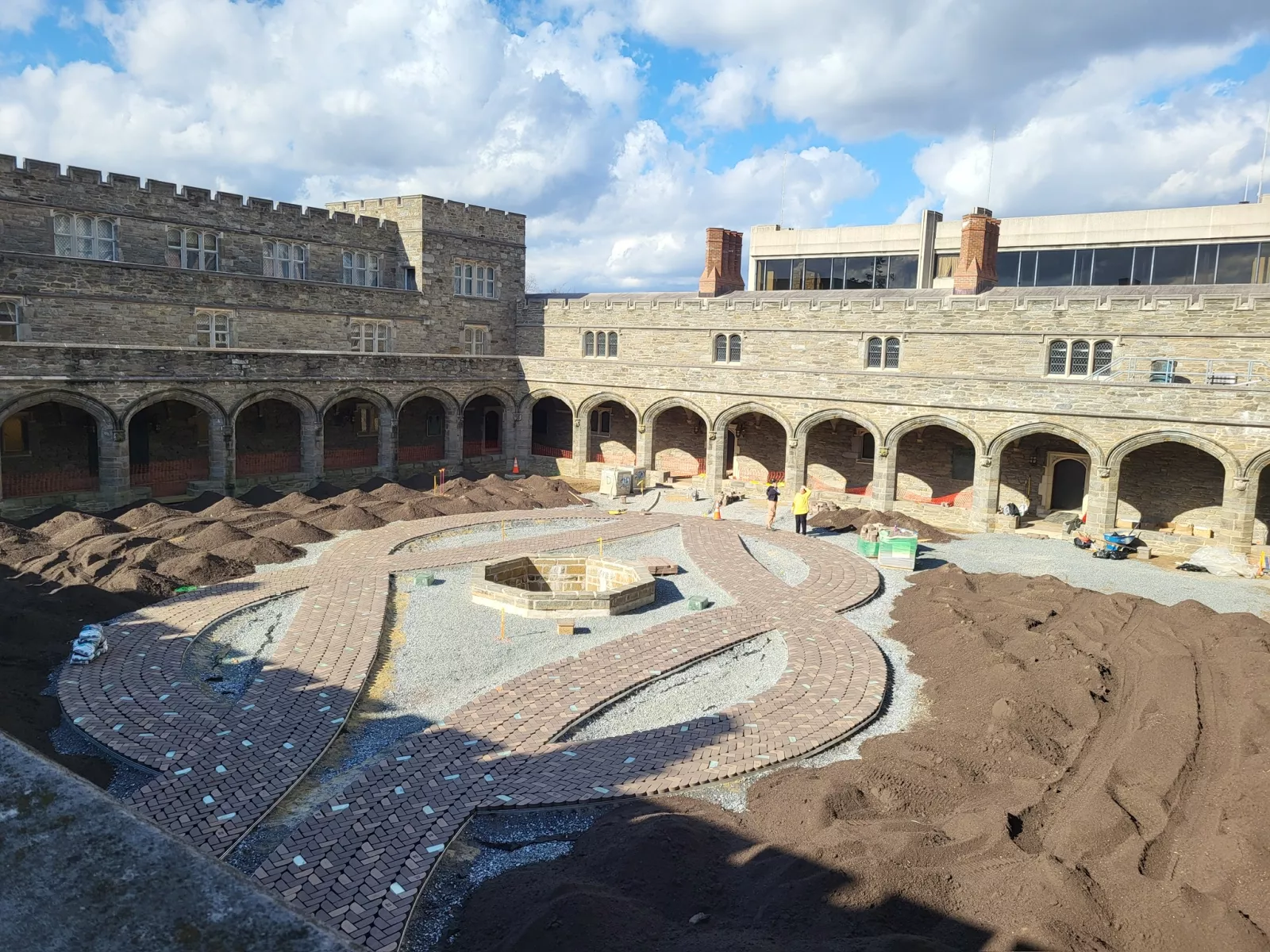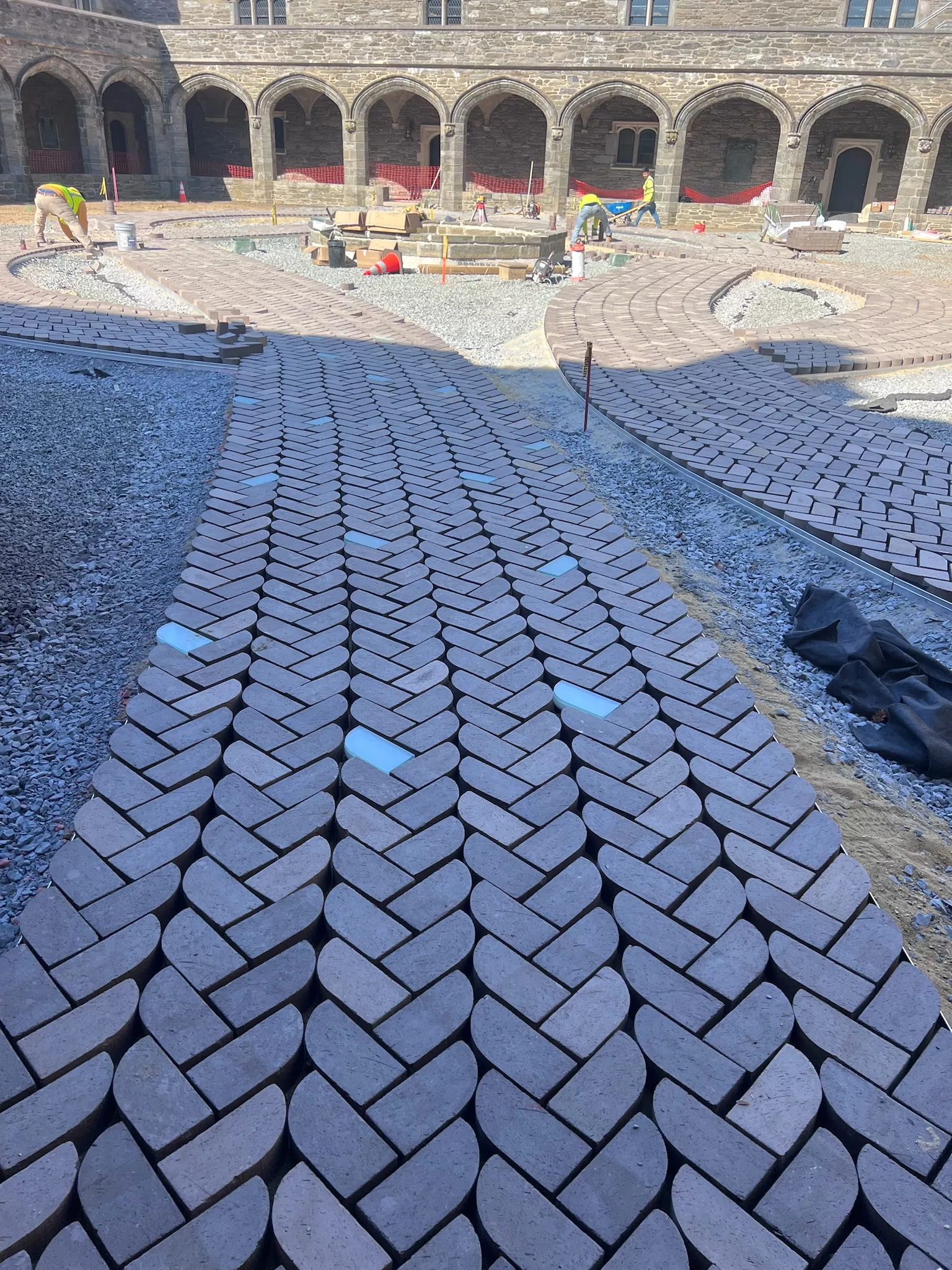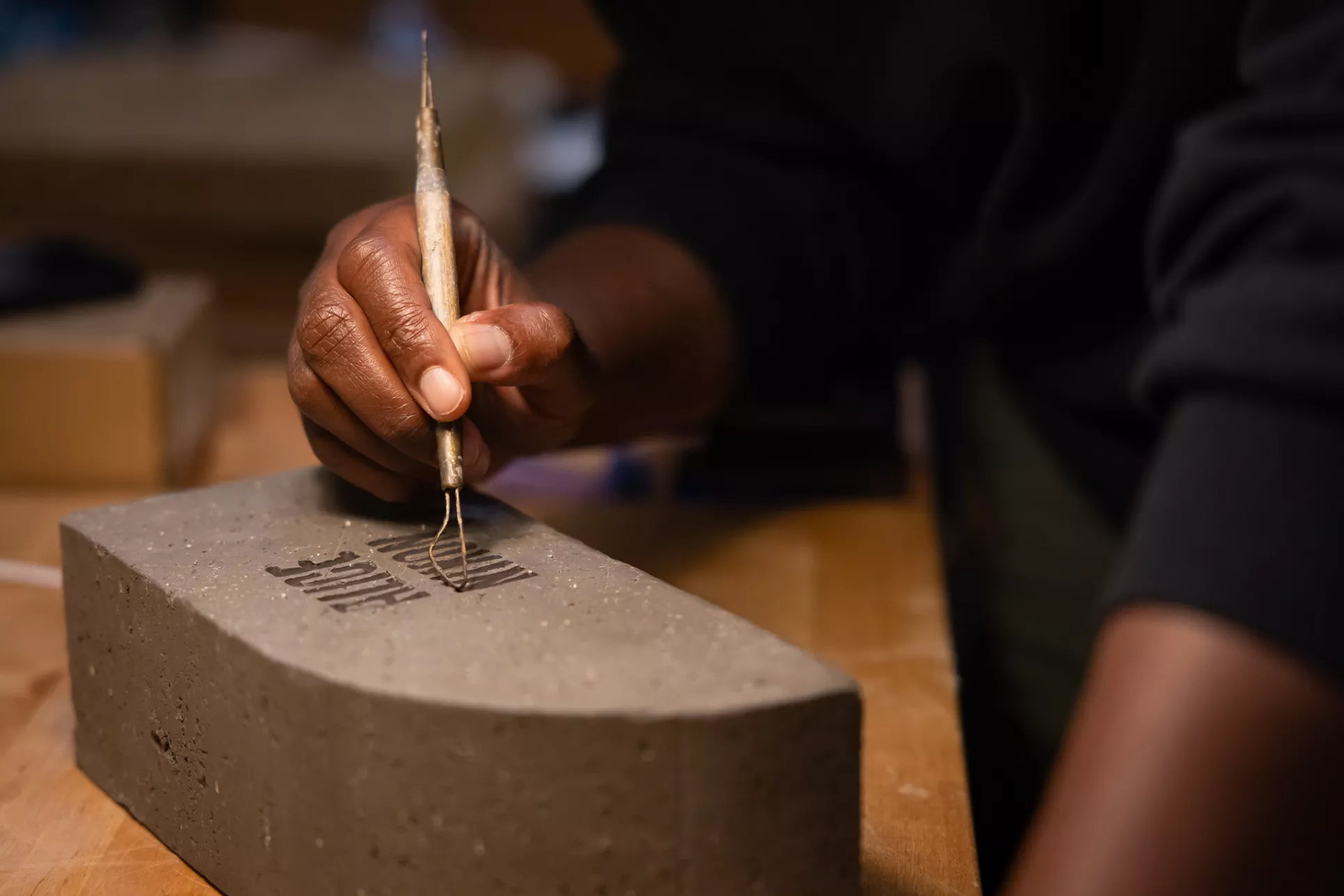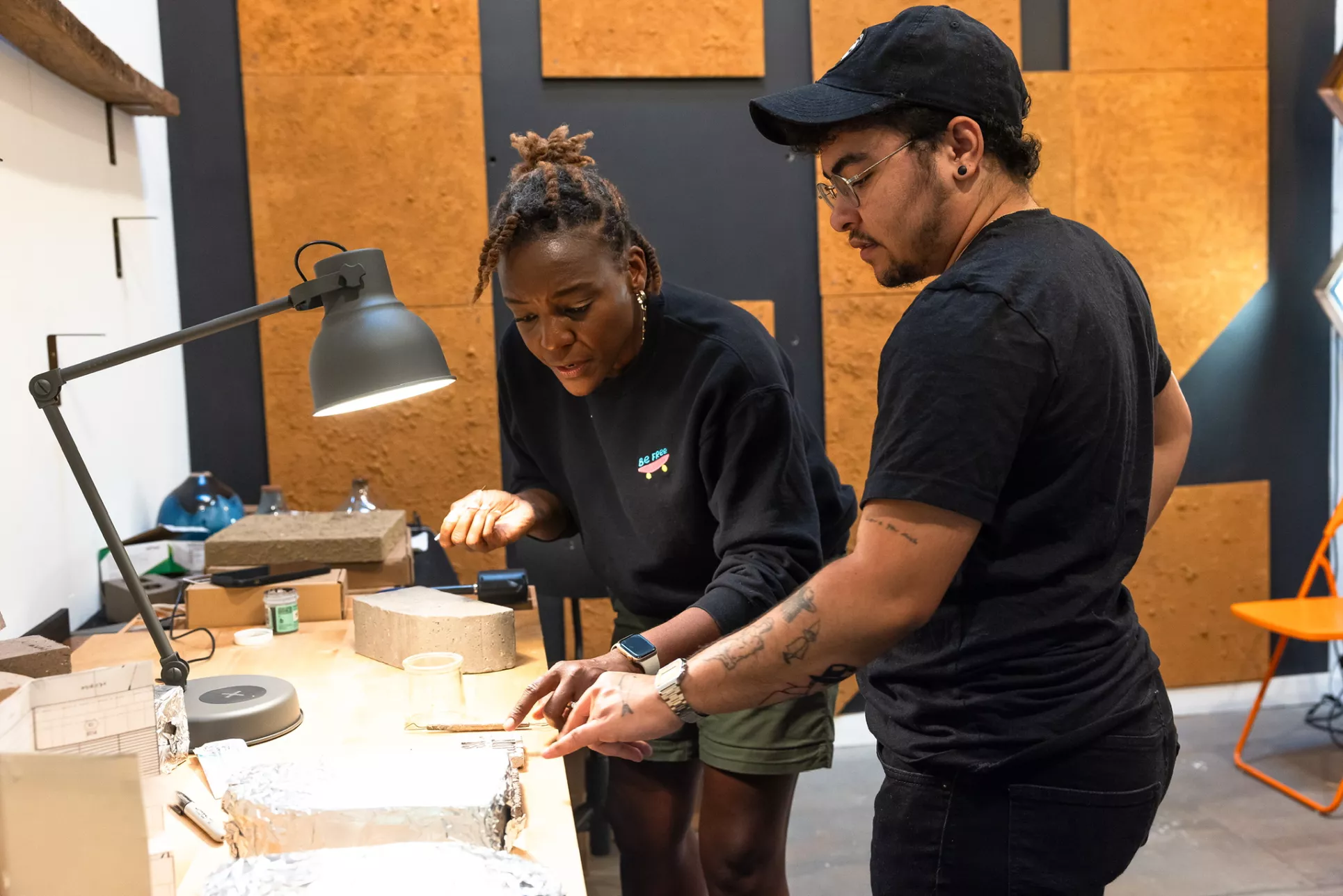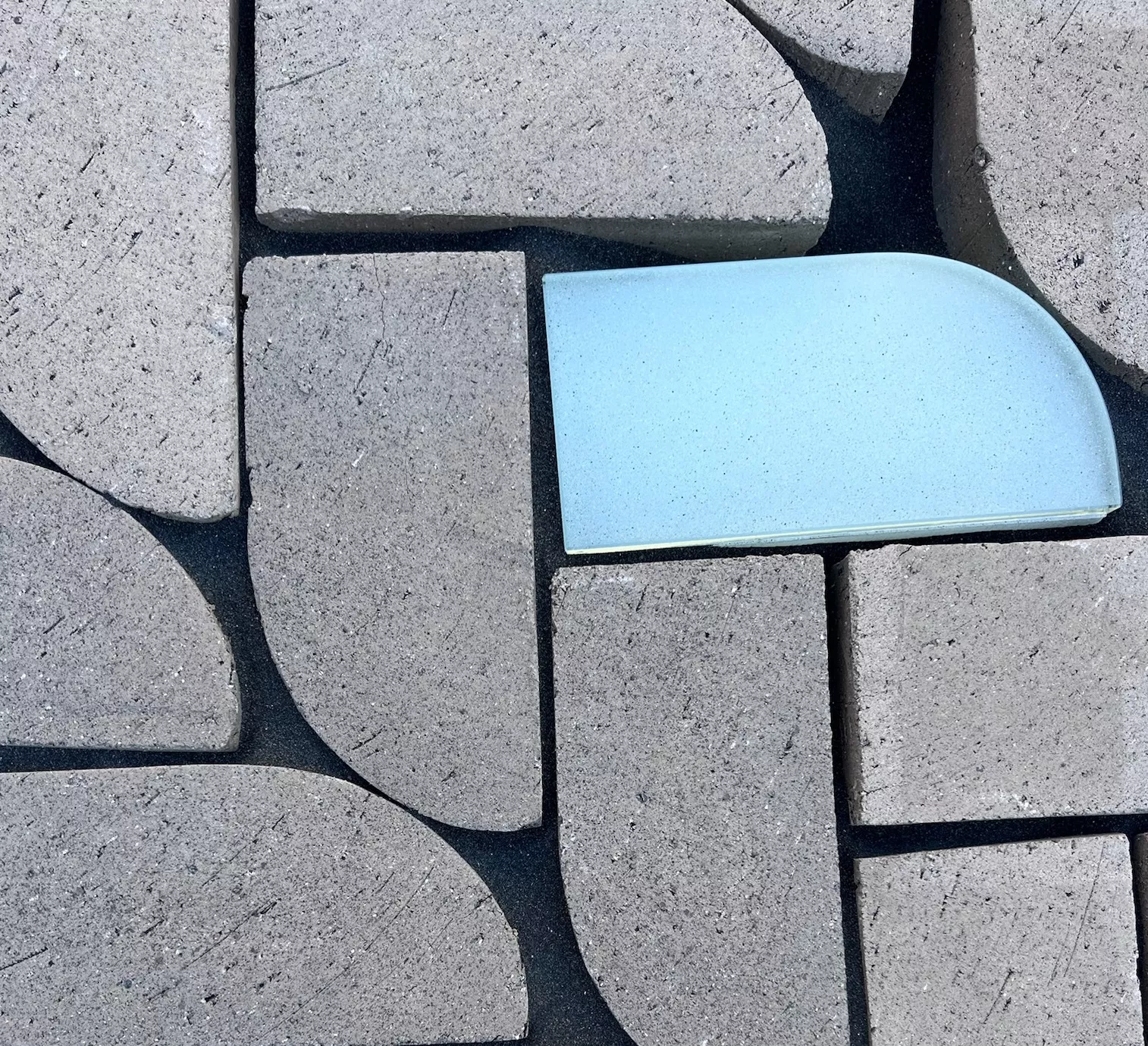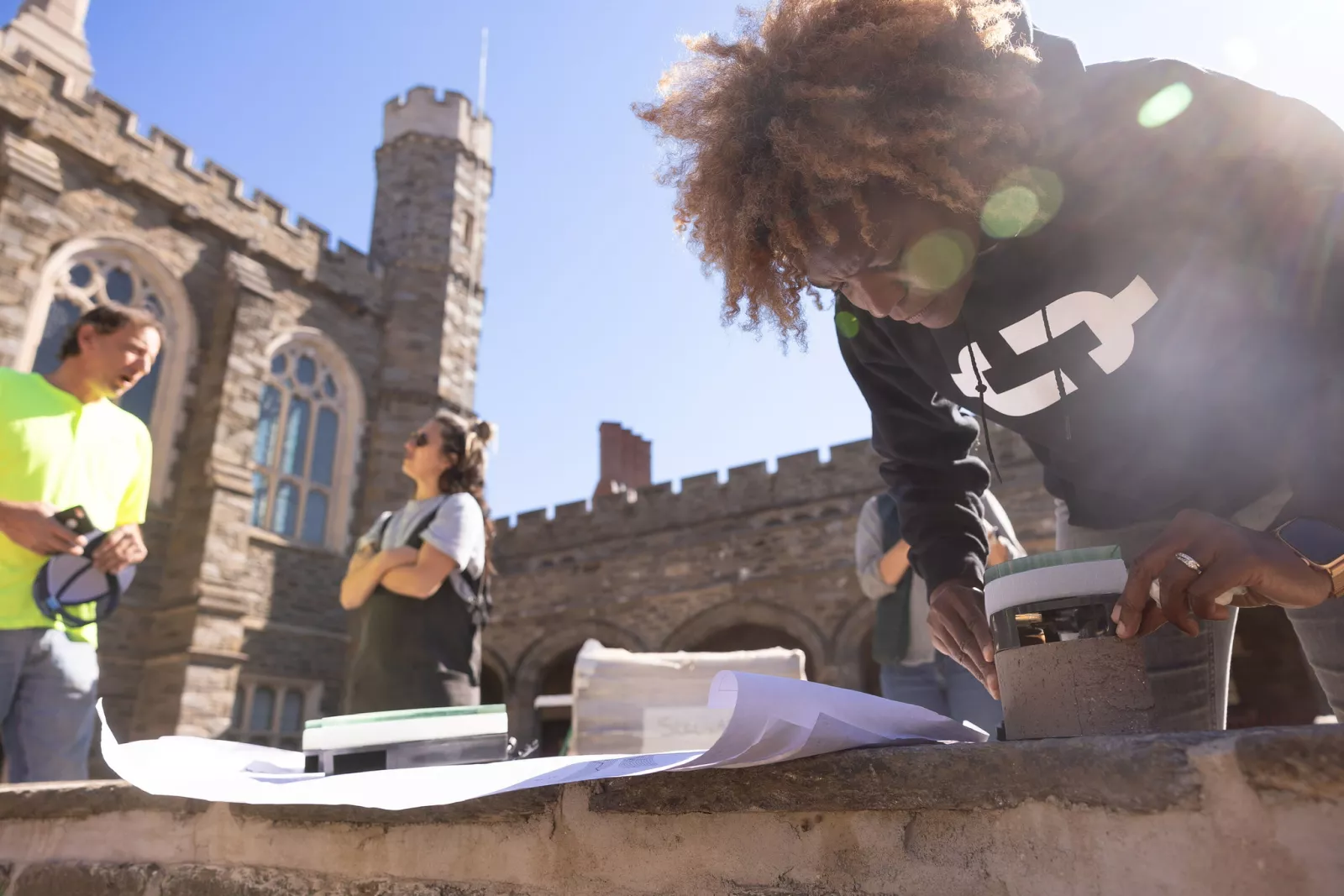Construction Nearly Complete on ARCH Project as the Cloisters is Transformed
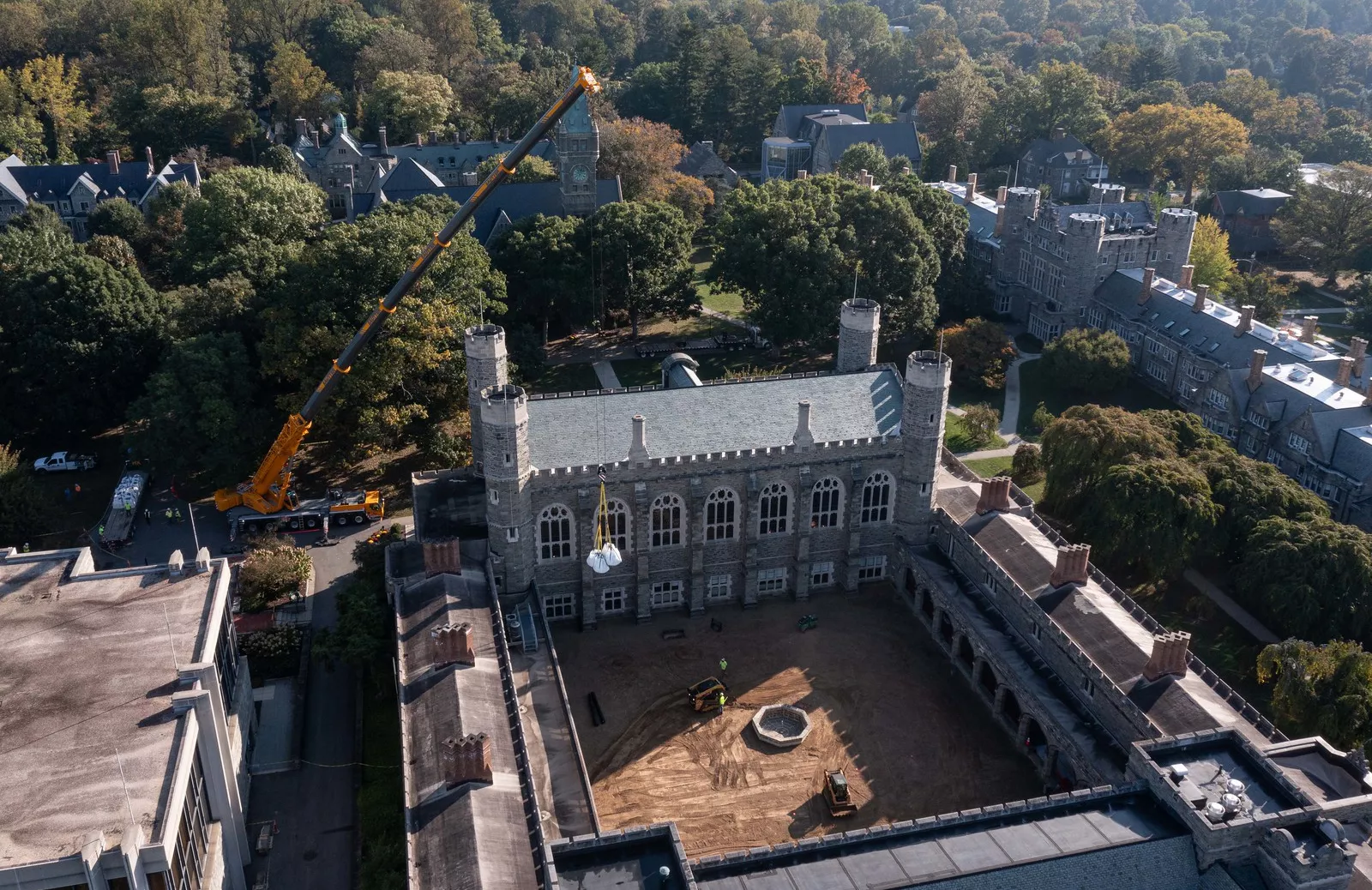
Since installation work began in September, hundreds of tons of paving stones, sand, gravel, soil, and equipment have been craned over the walls of Old Library into the courtyard of the Cloisters, where teams of craftspeople including landscapers, Bryn Mawr facilities staff, and electricians are taking Nekisha Durrett’s Don’t Forget to Remember (Me) from a design on a page to a reality.
The installation uses custom pavers to create pathways in the Cloisters’ courtyard which, when seen from above, create a woven path that Durett describes as “the shape of a knot that cannot be undone, symbolizing interconnectivity, and making visual that Bryn Mawr is reexamining its history to tell all of its stories.”
Don’t Forget to Remember (Me) is the centerpiece of Bryn Mawr College’s ARCH Project (Art Remediating Campus Histories). Done in partnership with Monument Lab, ARCH is a multi-year collaboration that has engaged students, staff, faculty, and alums to create a lasting campus public artwork that responds to the legacy of exclusionary practices at the College.
The design for the pathways came in part from a Black at Bryn Mawr tour Durrett took prior to submitting her proposal to the College, she says.
“There was a tour guide who was wearing very long braids and as I was conceptualizing the piece, I kept looking at pictures from the tour and seeing those braids. I wondered if someone like her were to enter the space and see that, would she feel like she belonged.”
Durrett also took inspiration from Bryn Mawr’s first Black student, Enid Cook ’31.
“I thought about the path she took,” she says. “She wasn’t allowed to live on campus, but she was determined to be here, and so she walked. In the cold. In the rain. I think it was .9 miles that she walked, and I wanted to represent that path.”
Two hundred and fifty of the 9,000 pavers are engraved with the names of Black staff whose work was critical to building and operating the College, particularly in its early decades, but whose contributions were historically unrecognized. Annalise Ashman ’24 and Katelyn Kim ’26 did archival research using old timecards––which were once nearly lost in a fire–––of the individuals whose names will be etched into the pavers. Each engraved paver is coated with a glaze made in part with soil from Perry House, the College’s first Black Cultural Center and student housing.
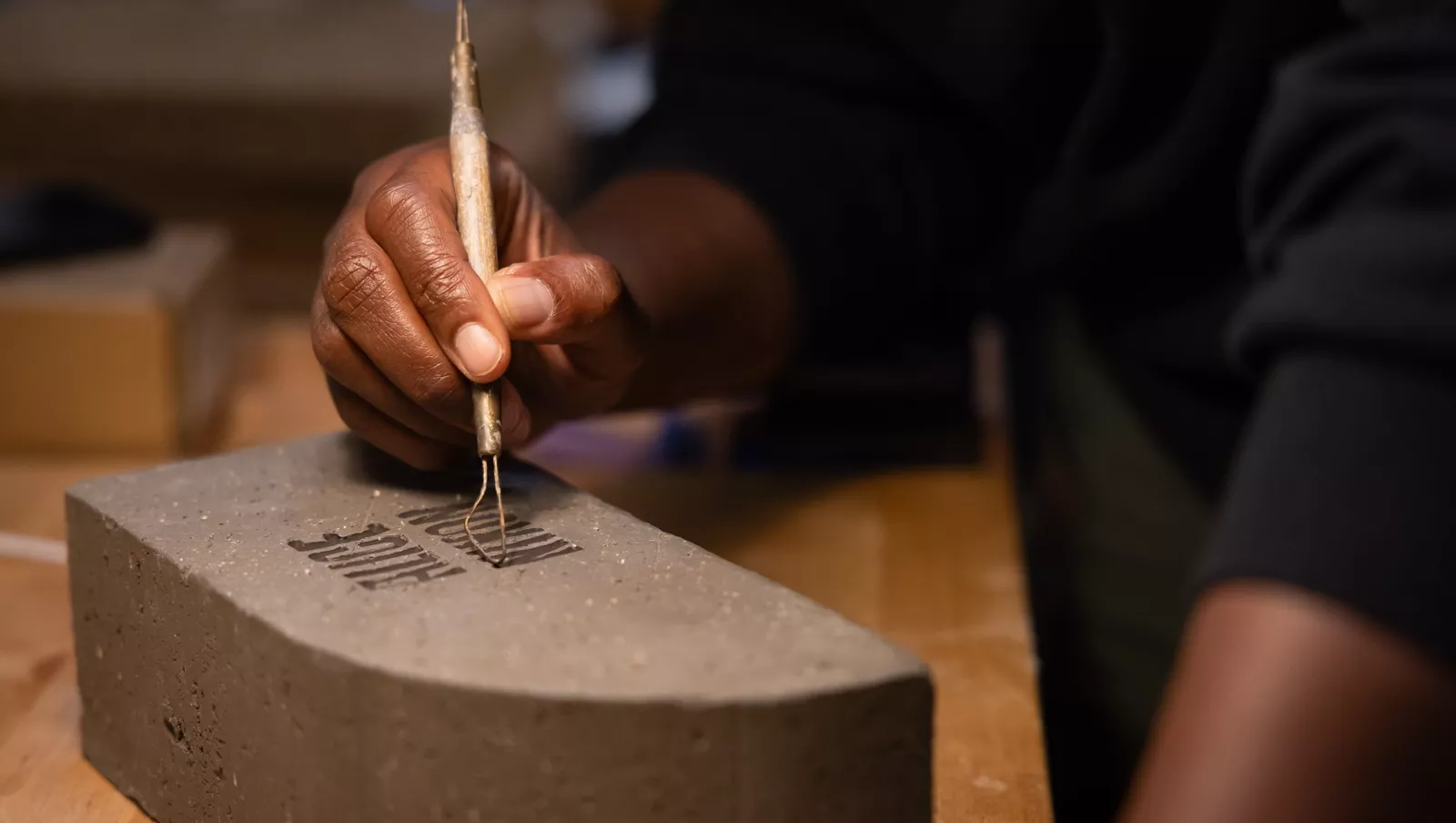
In the place of 230 pavers will be similarly shaped lights.
“Light is an important part of all my work,” says Durrett. “And these histories are worthy of being held up to the light and examined.”
The bulk of the construction phase of Don’t Forget to Remember (Me) is now completed. In total, 26 pallets of brick, 211 tons of stone, 18 tons of sand, and 285 tons of soil were used in the project. The ground level of the entire courtyard was raised nine inches and now meets ADA standards.
Associate Director of Facilities Jim McGaffin, who manages the project for the College, says the crane needed about 100 tons of steel plates added to its base to lift the materials and equipment.
All the pavers are expected to be in place by the end of November, and then only the lighting, landscaping, and a few other finishing touches will remain.
“To watch your work go from being just an idea to being fully realized is like bringing a child into the world,” says Durrett. “Then there’s the moment when you release it, and it belongs to the College, the generation that’s here now, and ones that will come later.”
Don’t Forget to Remember (Me) will be officially unveiled at an April 24 ceremony and the Cloisters will remain closed until that time.
“It’s been inspiring to work with an institution that is willing to do the work that I love to do, which is excavating these stories even when they don’t necessarily shine a positive light on the school,” says Durrett. “In order to get on that forward trajectory, you’ve got to be willing to take an honest look back at your past and see how it affects your students today, particularly your students of color.”
Associate Professor of History of Art and Director of Museum Studies Monique Scott is the faculty director of the ARCH project and has worked with Monument Lab and the President’s Office on this project since its earliest inception
“When I first encountered Nekisha’s artwork, her brilliant vision articulated in two dimensions, I was moved beyond words,” she says. “It encapsulated so much of what a public artwork could do for our campus community; it would memorialize so many stories and layers of history in its visionary design.”
“You can imagine, then, how choked up I was to stand in the almost finished space with Nekisha and walk the braided path alongside names recovered from history. Nekisha has elevated the names and lives of these Black workers that we're all indebted to so that we may pause and reflect on them for generations to come. This cloistered space will be reactivated as a poignant, rich site that our community can invigorate with joy, sorrow, contemplation, silence, conversation, dreams and laughter. I look forward to all the ways the artwork will come to life over the many years ahead.”
Aerial photo courtesy of H&K Group
Studio photos courtesy of Monument Lab, Photo credit: Steve Weinik
All other photos courtesy of Nekisha Durrett
Work on the project was done by:
Bryn Mawr College facilities staff
Imperial Stone Paving
Pabec Systems
Sautter Crane
H&K Group
Taylor Clay/Red Tree Group
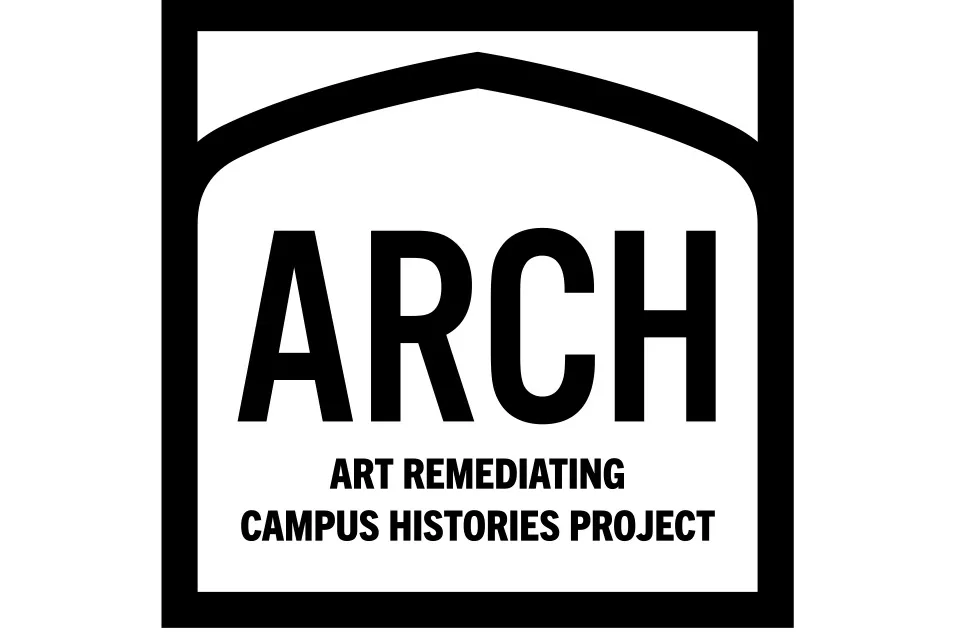
Bryn Mawr College’s ARCH Project (Art Remediating Campus Histories), in partnership with Monument Lab, is a multi-year collaboration to design a process and commission a campus public artwork that responds to the legacy of exclusionary practices at the College. This vital work builds on previous and ongoing College-supported efforts by students, staff, alumni, and faculty to reveal and repair harm, ensuring a reckoning with Bryn Mawr College’s history and a clear-sighted look at the way to a future of inclusion and reconciliation.
